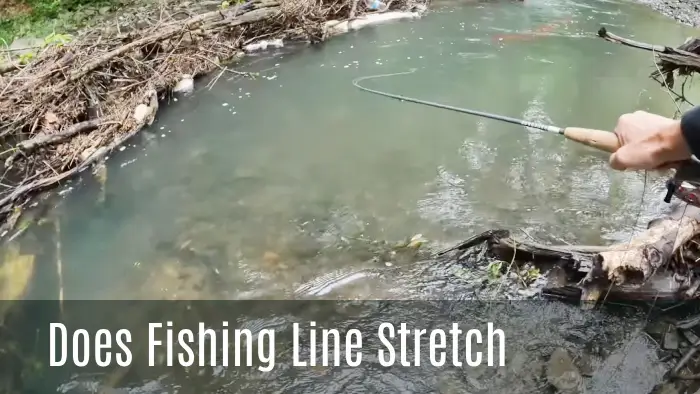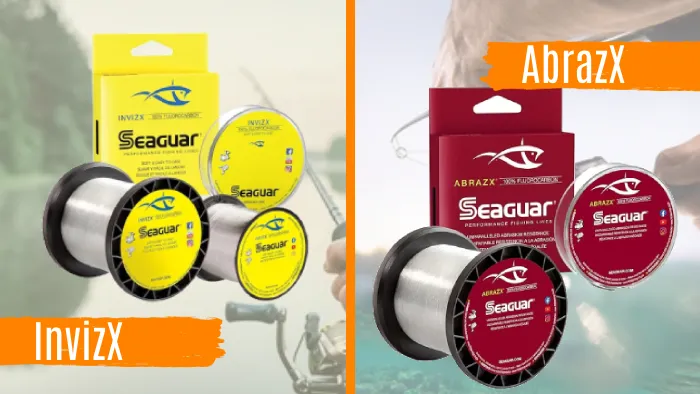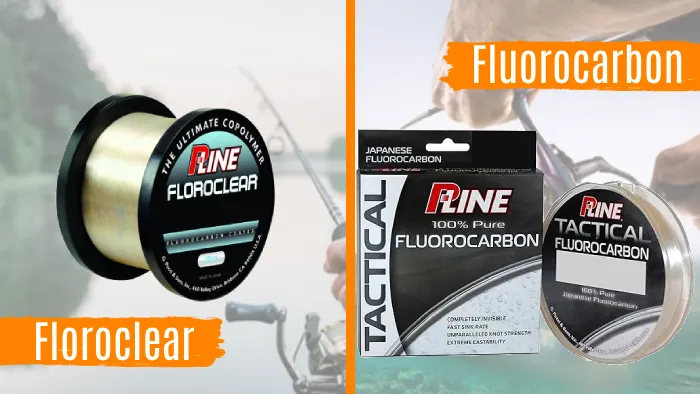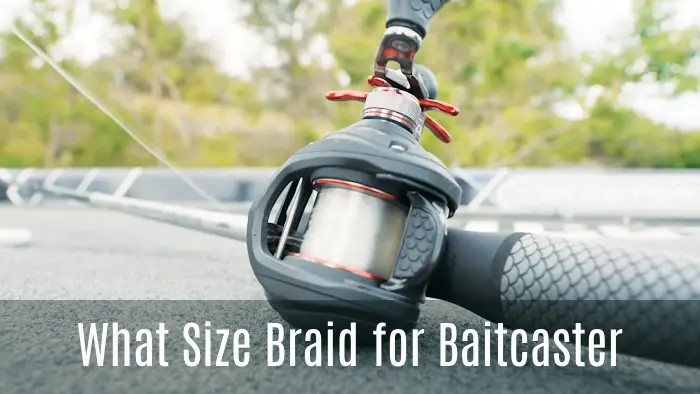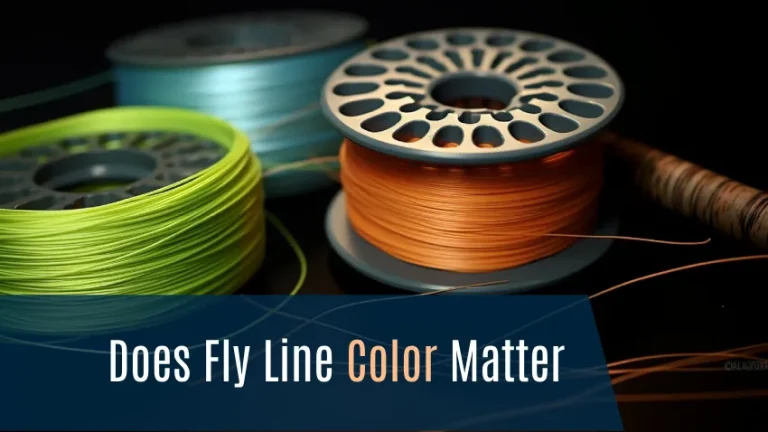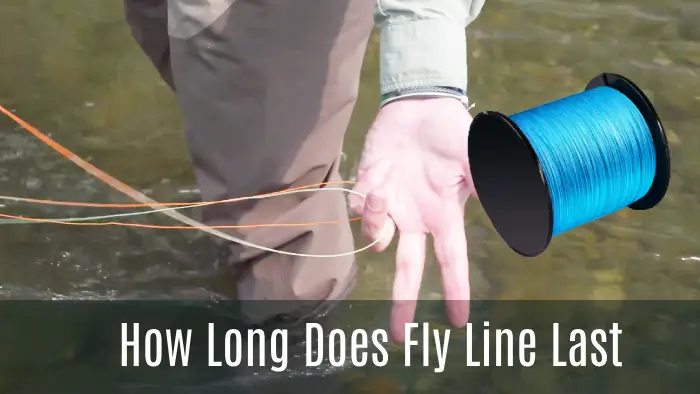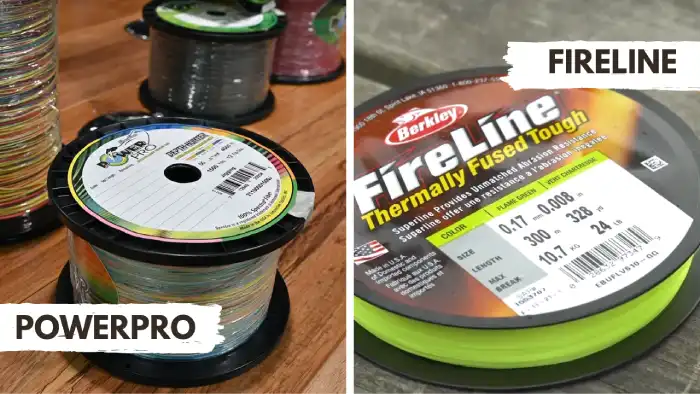Does Fishing Line Stretch: 4 True Factors
The fishing line plays a pivotal role in the success of any angler’s endeavor. Knowing the characteristics of fishing lines is essential whether you’re casting into calm lake waters or battling an ocean predator. One of these key attributes is a line’s stretch.
Fishing lines can indeed exhibit various degrees of stretch. The extent of stretch depends on the material, diameter, weight, and construction of the line. Monofilament and fluorocarbon lines are known for stretching, whereas braided lines are virtually devoid of this characteristic.
Understanding the science behind fishing line stretch is essential to improving your angling skills.
Here, we will dive into how fishing lines stretch and explore the advantages of both stretchy and non-stretchy lines. So, grab your fishing gear and get ready to unravel the secrets of fishing line elasticity.
How Does a Fishing Line Stretch: 4 Factors

Fishing line stretch is a property of the line. To understand how a fishing line stretches, four factors must be considered.
- Material composition
- Diameter and thickness
- Weight
- Environmental factors
No 01: Material Composition
The stretch characteristics of a fishing line are heavily influenced by the type of material it’s made from. Monofilament lines, typically made from various plastics, uniformly stretch between 10% to 25% of their length.
Fluorocarbon lines, on the other hand, are manufactured from Polyvinylidene difluoride (PVDF) and also stretch around 10% to 25% of their length, but their stretch pattern differs significantly. Most stretch in fluorocarbon lines occurs beyond 50% of the line rating.
In contrast, braided fishing lines, constructed with multiple strands of synthetic fibers, don’t stretch at all.
No 02: Diameter and Thickness
The thickness or diameter of a fishing line plays a significant role in determining its stretch characteristics. Thinner lines tend to stretch more than thicker ones. This is because the thinner line has less material to resist the force applied to it, resulting in greater elongation.
On the other hand, thicker lines, such as monofilament lines, exhibit more uniform stretch behavior due to their larger diameter. They balance strength and stretch, making them suitable for various fishing applications.
In contrast, braided, typically thin lines have minimal stretch, providing high sensitivity and greater control over the fishing rod.
Therefore, the diameter and thickness of a fishing line directly influence its stretch properties, affecting its performance and suitability for different fishing techniques.
No 03: Weight
The weight of the line plays a role in its stretchability. Generally, heavier lines tend to have slightly more stretch than lighter lines of the same material. This is because the added weight puts more tension on the line, causing it to elongate under load.
No 04: Environmental Factors
The environmental factors that affect a fishing line’s stretch include moisture absorption and UV exposure, which can impact its stretch characteristics over time.
Moisture absorption can cause lines to weaken and become more prone to stretching. This is particularly true for monofilament lines, as they’re more susceptible to moisture absorption than other fishing lines.
When a monofilament line absorbs moisture, it can lead to a decrease in its overall strength and an increase in its elasticity.
Alternatively, braided lines are less prone to moisture absorption but can still be affected by UV exposure. Over time, UV exposure can cause the braided line to become more brittle and less elastic, ultimately affecting its stretch properties.
How Does a Stretchy Fishing Line Help You?
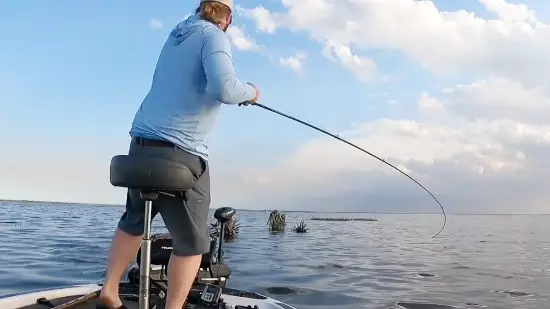
A stretchy fishing line can offer several benefits when you’re out on the water.
No 01: Shock Absorption
When fishin`g, a stretchy fishing line can help you absorb shocks and impacts, providing a buffer against sudden forces when a fish makes a strong run or strike. This shock absorption is due to the line’s ability to stretch under pressure.
As the fish exerts force on the line, it causes the line to elongate, absorbing the energy of the sudden impact. Fishing lines have a stretchy property that helps distribute the force along their length, reducing their chances of breaking. The line acts as a shock absorber, reducing the strain on the line and the fishing rod.
This is particularly important when dealing with large or hard-hitting fish, as the sudden movements and powerful strikes can easily snap a non-stretchy line.
No 02: Reduced Line Breakage
To reduce line breakage, a stretchy fishing line helps you by absorbing the force of sudden jerks or surges from a fish, preventing immediate snapping. When a fish makes a powerful run, the stretch in the line allows it to elongate, distributing the force along its length.
This elongation acts as a cushion, reducing the stress on the line and decreasing the likelihood of it breaking. The stretchy nature of the line allows it to absorb and dissipate the energy generated by the fish’s movements, minimizing the risk of sudden tension overload.
No 03: Enhanced Lure Action
With a stretchy fishing line, you can enhance the action of your lure, enticing fish with increased movement and vibration. The line’s elasticity allows for more flexibility, enabling the lure to move and wiggle more naturally and lifelike.
As you retrieve the line, the stretchiness allows the lure to resist the tension and create a pulsating motion that can attract the attention of nearby fish. This enhanced action can be particularly effective when targeting species that are attracted to the movement and vibration of their prey.
No 04: Less Hook Pull
A stretchy fishing line can be beneficial in reducing the risk of hook pull during fishing activities.
When a fish makes sudden movements or resists being caught, the stretch in the line allows a better hook penetration and buffers the force exerted by the fish. This slight give in the line absorbs some of the shock and reduces the chances of the fish pulling the hook out of its mouth.
No 05: Forgiveness for Novice Anglers
If you’re a novice angler, a stretchy fishing line can provide forgiveness and make securing a fish easier.
The stretchiness of the line allows it to absorb the shock and tension that occurs when a fish bites and you set the hook. This forgiveness factor is particularly beneficial if your hook-setting technique isn’t yet perfected.
Setting the hook with a stretchy line provides a margin of error by absorbing some of the force and preventing the hook from pulling out of the fish’s mouth. In other words, you can land the fish even if you don’t time or execute your hook-setting motion perfectly.
No 06: Resistance to Sudden Loads
A stretchy fishing line helps you by providing resistance to sudden loads, allowing it to withstand abrupt increases in tension without breaking. A fishing line’s stretch absorbs the shock caused by sudden increases in pressure, such as when a fish bites your lure or when you hook onto a powerful fish.
This stretching action prevents the line from snapping under the sudden load and allows you to reel in the fish without losing it. The elasticity of the fishing line acts as a buffer, reducing the risk of line breakage and giving you more control over your catch.
This feature is particularly beneficial when angling in challenging conditions like fly fishing in Illinois or dealing with unpredictable fish behavior.
How Does a Non-stretchy Fishing Line Help?
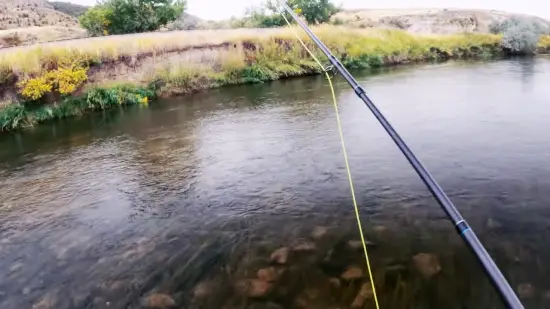
Besides a stretchy fishing line, a non-stretchy fishing line also offers several advantages.
No 01: High Sensitivity
Using a non-stretchy fishing line greatly enhances your sensitivity, allowing you to feel even the tiniest fish movements. This heightened sensitivity is achieved because non-stretchy lines have minimal elasticity, meaning they don’t stretch significantly when under tension.
When a fish bites or tugs on your line, the lack of stretch in a non-stretchy line enables you to immediately detect this subtle movement. Since there is no stretch, the energy and motion from the fish’s bite or movement are directly transmitted to your fingertips.
This heightened sensitivity is crucial for detecting even the most delicate nibbles, especially when fish exhibit finicky behavior or when fishing in deep water. Using a non-stretchy fishing line gives you a significant advantage in detecting fish activity and swiftly responding to it.
No 02: Precise Hook Sets
To achieve precise hook sets, a non-stretchy fishing line allows you to maintain direct contact with the fish, ensuring immediate response to their movements. When you set the hook with a non-stretchy line, there’s minimal energy lost due to line stretch, making the angler’s force more efficient.
This means the hook can penetrate the fish’s mouth quickly and effectively, increasing the chances of a successful hook set. With a non-stretchy line, you can feel even the slightest nibble or movement from the fish, allowing you to react promptly and set the hook with precision.
The lack of stretch in the line enhances your ability to detect subtle bites and make quick adjustments, improving your overall fishing experience.
No 03: Better Control
A non-stretchy fishing line gives you greater control over your lure or bait, allowing for more accurate presentation and finesse fishing techniques. The lack of stretch in the line means that any movement with your rod will be immediately transmitted to the bait, providing instant feedback and control.
This enables you to precisely manipulate the bait, making subtle adjustments to entice finicky fish and mimic natural movements. You can manipulate your bait precisely as intended with a non-stretchy line, whether using a soft plastic worm or a delicate fly.
No 04: No Energy Wasted
You can maximize your fishing efficiency with a non-stretchy fishing line, as it prevents any energy from being wasted. Unlike stretchy lines that absorb energy and reduce the force applied to the fish, a braided line does not stretch when loaded.
This means your energy is transmitted directly to the fish, allowing for more effective battles, especially when dealing with strong or hard-fighting species. With a non-stretchy line, every ounce of force you apply is utilized to its full potential, increasing your chances of successfully reeling in the fish.
No 05: Resistance to Abrasion
A non-stretch fishing line’s resistance to abrasion is crucial in preventing potential damage caused by rubbing against obstacles, ensuring durability and longevity.
When fishing in areas with heavy cover or sharp underwater structures, a braided line’s non-stretch properties make it highly resistant to abrasion. This means the line is less likely to snap when it comes into contact with obstacles such as rocks, logs, or vegetation.
The tightly woven fibers of the braided line create a strong and durable surface that can withstand the friction and wear caused by rubbing against these obstacles.
No 06: Thin and Less Visible
Non-stretchy fishing lines, when used, can often make your line thinner and less visible in the water. This is due to the nature of non-stretchy materials, which are typically made from stronger, denser fibers. These fibers allow for a smaller diameter without sacrificing strength, resulting in a thinner line.
A thinner line has less surface area, reducing its visibility to fish in the water. This is particularly advantageous in clear water or when targeting shy or easily spooked fish that are more likely to be deterred by a thick, visible line.
Additionally, a non-stretchy fishing line reduces the chances of fish detecting the line and becoming wary, increasing your chances of catching fish.
No 07: Durability and Longevity
To enhance the durability and longevity of your fishing line, a non-stretchy line offers key advantages. Non-stretchy lines, such as braided lines, are specifically designed to withstand the rigors of fishing.
Unlike stretchy lines that can weaken and lose shape over time, non-stretchy lines maintain strength and integrity even after prolonged use.
This is because non-stretchy lines are less affected by environmental factors such as moisture absorption and UV exposure. They’re also less prone to abrasion and damage from rocks, reefs, or sharp objects.
No 08: Improved Casting Distance
If you want to improve your casting distance, using a fishing line that doesn’t stretch can make a significant difference. A non-stretchy fishing line, also known as a low-stretch or zero-stretch line, offers several advantages in casting.
Traditional fishing lines that stretch absorb some of your energy into the cast, transferring less energy to the lure or bait when you cast. In contrast, a non-stretchy fishing line minimizes energy loss due to stretch, transferring more energy to the lure.
This increased energy transfer translates into improved casting distance, as more power is available to propel the lure through the air.
What fishing line is least likely to tangle?
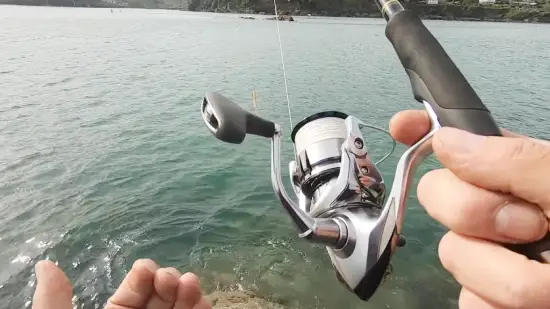
Regarding fishing lines, anglers who want to minimize tangles should consider using braided lines.
A braided fishing line comprises multiple strands of synthetic fibers, such as nylon or polyethylene, woven together to create a strong and durable line. The tightly woven construction of the braided line reduces the chances of tangling compared to other fishing lines.
Do fishing lines age and lose their stretch over time?
Fishing lines can degrade with time, especially when exposed to harsh environmental conditions. UV light, moisture, and temperature fluctuations can contribute to the aging of fishing lines. Their stretch properties might change as they age, potentially impacting their performance.
Can you adjust the stretch of a fishing line based on the target fish species?
Pre-stretching a fishing line is a common practice among anglers to modify its stretch characteristics. When anglers apply tension to a line before use, it will reduce its initial stretch. It makes it more suitable for specific fishing needs, such as catching larger or dangerous fish.
Dynamics of Fishing Line Stretch for Optimal Performance
The decision to use a line with stretch or one with minimal stretch depends on an angler’s preferences and the specific demands of their fishing style. Understanding the factors influencing line stretch is essential for making informed choices.
As monofilament and fluorocarbon lines offer elasticity and unique advantages, braided lines provide exceptional sensitivity and control due to their minimal stretch.
Stretchy fishing lines can provide advantages, such as absorbing the shock of a fish’s sudden movements. On the other hand, non-stretchy lines offer increased sensitivity and better hook sets.
Whether casting lines for leisure or seeking the trophy catch, the dynamics of fishing line stretch play a crucial role in the angler’s quest for success.
So go ahead, choose wisely, and enjoy a successful day on the water.

